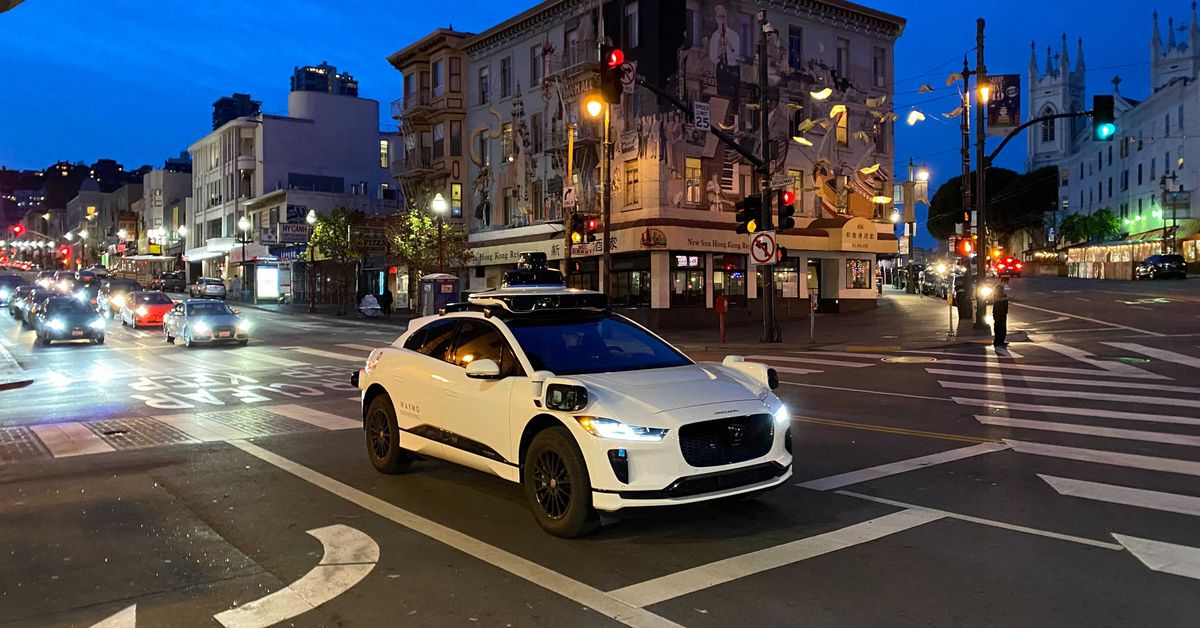Waymo and Cruise dominated autonomous testing in California in the first year of the pandemic
Source: The Verge added 11th Feb 2021Unsurprisingly, there was much less autonomous vehicle testing in California in 2020 compared to years prior. The COVID-19 pandemic and ensuing lockdowns forced many AVs off the road in the early part of the year. But companies licensed to operate AVs on public roads in California still logged nearly 2 million miles of testing, with two of the top operators, Waymo and Cruise, comprising the bulk of those miles thanks to what some safety drivers allege was a lax attitude toward safety.
Autonomous vehicles registered in California traveled approximately 1.99 million miles in autonomous mode on public roads in 2020, a decrease of about 800,000 miles from the previous year, according to the state’s Department of Motor Vehicles. These mileage figures were reported as part of the state’s annual “disengagement reports,” which all licensed operators are required to submit. In addition to the miles driven, the reports list the frequency at which human safety drivers were forced to take control of their autonomous vehicles (also known as a “disengagement”).
The disengagement reports are widely disparaged as being, at best, meaningless and, at worse, misleading. Companies have a lot of discretion about when to disengage, the testing environments aren’t uniform, and it’s difficult to make an apples-to-apples comparison between companies. Media outlets tend to overhype the numbers in service of a false “race” narrative in which certain companies are outpacing others in miles driven and disengagements.
But this year, the reports can still serve as a time capsule of a year upended by the coronavirus pandemic. Waymo, for example, generally considered to be the leading autonomous vehicle operator in the world, only drove 628,838 miles, a 56-percent decrease compared to the 1.45 million miles it drove in 2019. That decrease is notable considering Waymo was recently approved to begin accepting passengers in its vehicles in preparation for the inevitable launch of a robotaxi service in California.
Waymo only reported 21 disengagements over the course of the year, or a rate of 0.033 disengagements per 1,000 miles. That’s an improvement over the company’s rate of 0.076 per 1,000 self-driven miles in 2019.
Cruise, a wholly owned subsidiary of General Motors and Waymo’s main rival, is also prepping to launch a similar service in the state. And interestingly enough, its mileage number remained more or less the same last year as compared to 2019. The company reported driving 770,049 miles, a 7-percent decrease over 2019. It logged 26 disengagements during the year for a rate of 0.033 per 1,000 miles, improving on its 2019 rate of 0.082.
The total miles driven by Waymo and Cruise, 1.39 million, is 70 percent of the total autonomous miles driven in California in 2020. Both companies briefly grounded their vehicles in the early months of the pandemic, but Cruise was back on the road by late April, using deliveries to local food banks as a pretext. Waymo followed suit, resuming limited operations in June delivering packages for two Bay Area nonprofits. Over the summer, as COVID-19 cases in California were peaking, both companies resumed regular operations. Only when the air quality became very poor during the summer’s historic wildfires did Waymo and Cruise pull their vehicles from the road — and only briefly.
This was a worrisome decision for many of the companies’ backup drivers. Waymo and Cruise contract the labor of thousands of operational staff in the Bay Area, including backup drivers, mechanics, cleaners, and fleet managers. Backup drivers, in particular, play a crucial role: they monitor the driving operations of the self-driving car and occasionally take control when something goes wrong.
Some backup drivers were glad to be back at work. But others raised concerns about being stuck in a vehicle for hours a day with another person without the ability to socially distance. They chafed at being asked to come back to work while the salaried employees in the engineering and software divisions of these companies got to continue to work from home.
Waymo and Cruise both insist that safety, including the safety of their contract workers, is a top concern. But several drivers have accused the companies of exploiting loopholes to get cars back on the road in defiance of local public health orders. Cruise, in particular, was criticized for deploying non-delivery vehicles despite public health orders banning regular autonomous vehicle testing. Cruise said the extra vehicles were needed for R&D support for the delivery operation.
Waymo and Cruise weren’t alone in racking up big mileage numbers during the pandemic. Pony.ai, a self-driving startup based in Silicon Valley and Guangzhou, China, reported driving 225,496 miles in autonomous mode. And Zoox, an autonomous vehicle company recently acquired by Amazon, drove 102,521 miles.
Apple, which has been working on its own secretive car project for years, reported driving 18,805 miles, more than doubling its mileage in 2019. The tech giant also reported 130 disengagements, up from 64 the previous year.
brands: Alone Amazon Apple Area Best Bulk Crucial First General Motors It local Million Silicon WAS media: 'The Verge' keywords: Amazon Apple Software Startup
Related posts
Notice: Undefined variable: all_related in /var/www/vhosts/rondea.com/httpdocs/wp-content/themes/rondea-2-0/single-article.php on line 88
Notice: Undefined variable: all_related in /var/www/vhosts/rondea.com/httpdocs/wp-content/themes/rondea-2-0/single-article.php on line 88
Related Products
Notice: Undefined variable: all_related in /var/www/vhosts/rondea.com/httpdocs/wp-content/themes/rondea-2-0/single-article.php on line 91
Warning: Invalid argument supplied for foreach() in /var/www/vhosts/rondea.com/httpdocs/wp-content/themes/rondea-2-0/single-article.php on line 91
